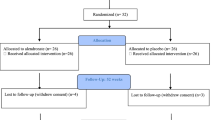Abstract
The bone mineral density (BMD), the cross- links (PYD, DPD and NTx) and the bone specific alcaline phosphatase (BAP) was investigated in a cross-sectional study in 62 male patients with spinal cord injury (SCI), n = 28 short-term (0–1 year after SCI) and n = 34 long-term SCI patients (> 5 years after SCI). Knowledge about this parameters are necessary to find an adequate therapy for this special kind of osteoporosis. Immobilisation osteoporosis in SCI patients is a well-known problem that may lead to pathological fractures. Little is known regarding the extend of the osteoporosis as well as the causative factors. Measurements of the BMD in the proximal femur and the lumbar spine were performed with dual-energy-X-ray-absorptiometry (DEXA), of the osteoblast marker BAP (bone specific alkaline phosphatase) from serum and the osteoclast markers PYD (pyridinoline), DPD (desoxy-pyridinoline) and NTx (N-telopeptide of collagen type I) from urine. We found a significant decrease of BMD in the proximal femur and no relevant change in the lumbar spine compared to an age- and sex correlated control group (Z-score) in short-term and long-term SCI patients. There was a significant bone loss at the proximal femur between short and long-term SCI patients, whereas at the lumbar spine the BMD even slightly increases. Bone resorption (cross-links) was increased in both groups, though in long-term SCI patients it is significantly decreased compared to short-term SCI patients (DPD from 211.7 u/g creatinine to 118.1 u/g creatinine; NTx from 215.1 nmol/mmol creatinine to 83,6 nmol/mmol creatinine). The bone formation marker BAP is slightly below normal range in both groups (12.3 U/l in short-term, 9.7 U/l in long- term SCI patients). Only the proximal femur is affected by the immobilisation osteoporosis of SCI patients, therefore the BMD measurements in these patients should be performed at the lower limb. The problem of the immobilisation osteoporosis in SCI patients is the striking increase of bone resorption and the missing reaction of the bone formation.






Similar content being viewed by others
References
Biering-Sorensen F, Bohr H, Schaadt O (1990) Longitudinal study of bone mineral content in the lumbar spine, the forearm and the lower extremities after spinal cord injury. Eur J Clin Invest 20:330–335
Bischoff H, Staehelin HB, Vogt P, Friderich P, Vontheim R, Tyndall A, Theiler R (1999) Immobility as a major cause of bone remodeling in residents of a long-stay geriatric Ward. Calcif Tissue Int 64:485–489
Chappard D, Minaire P, Privat C, Berard E, Mendoza-Sarmiento J, Tournebise H, Basle MF, Audran M, Rebel A, Picot C et al (1995) Effects of tiludronate on bone loss in paraplegic patients. J Bone Miner Res 10(1):112–118
Comarr AE, Hutchinson RH, Bors E (1962) Extremity fractures of patients with spinal cord injuries. Am J Surg 103:732–739
Dauty M, Verbe BP, Maugars Y, Dubois C, Mathe JF (2000) Supralesional and sublesional bone mineral density in spinal cord-injured patients. Bone 27(2):305–309
Fiore CE, Pennisi P, Ciffo F, Scebba C, Amico A, Di Fazzio S (1999) Immobilisation-dependent bone collagen breakdown appears to increase with time: evidence for a lack of a new bone equilibrium in response to reduced load during prolonged bed rest. Horm Metab Res 31:31–36
Freehafer AA, Mast WA (1965) Lower extremity fractures in patients with spinal cord injury. J Bone Joint Surg Am 47(4):683–694
Frey-Rindova P, de Bruin ED, Stuessi E, Dambacher MA, Dietz V (2000) Bone mineral density in upper and lower extremities during 12 months after spinal cord injury measured by peripheral quantitative computer tomography. Spinal Cord 38:26–32
Kunkel CF, Scremin AME, Eisenberg B, Garcia JF, Roberts S, Martinez S (1993) Effects of standing on spasticity, contracture and osteoporosis in paralyzed males. Arch Phys Med Rehabil 74:73–78
Leslie WD, Nance PW (1993) Dissociated hip and spine demineralisation: a specific finding in spinal cord injury. Arch Phys Med Rehabil 74:960–964
Maimoun L, Couret I, Micaleff JP, Peruchon E, Mariano-Goulart D, Rossi M, Leroux JL, Ohanna F (2002) Use of bone biochemical markers with dual-energy X-ray absorptiometry for early determination of bone loss in persons with spinal cord injury. Metabolism 51(8):958–963
Sabo D, Blaich S, Wenz W, Hohmann M, Loew M, Gerner HJ (2001) Osteoporosis in patients with paralysis after spinal cord injury. Arch Orthop Trauma Surg 121:75–78
Schmidt-Gayk H, Becker S, Traber L (1994) Diagnostik der Osteoporose. Osteologie 187–191
Seyedin SM, Kung VT, Daniloff YN, Hesley RP, Gomez B, Nielsen LA, Rosen HN, Zuk RF (1994) Immunoassay for urinary pyridinoline. The new marker of bone resorption. J Bone Miner Res 8:635–641
Tsuzuku S, Ikegami Y, Yabe K (1999) Bone mineral density differences between paraplegic and quadriplegic patients: a cross-sectional study. Spinal Cord 37:358–361
Uebelhart D, Gineyts E, Chapuy MC, Delmas PD (1990) Urinary excretion of Pyridinium cross-links: a new marker of bone resorption in metabolic bone disease. Bone Miner 8(1):87–96
Zehender Y, Luthi M, Michel D, Knecht H, Perrelet R, Neto I, Kraenzlin M, Zach G, Lippuner K (2004) Long-term changes in bone metabolism, bone mineral density, quantitative ultrasound parameters and fracture incidence: a cross-sectional observational study in 100 paraplegic men. Osteoporos Int 15(3):180–189
Zehender Y, Risi S, Michel D, Knecht H, Perrelet R, Kraenzlin M, Zaech GA, Lippuner K (2004) Prevention of bone loss in paraplegics over 2 years with alendronate. J Bone Miner Res 19(6):1067–1074
Author information
Authors and Affiliations
Corresponding author
Rights and permissions
About this article
Cite this article
Reiter, A.L., Volk, A., Vollmar, J. et al. Changes of basic bone turnover parameters in short-term and long-term patients with spinal cord injury. Eur Spine J 16, 771–776 (2007). https://doi.org/10.1007/s00586-006-0163-3
Received:
Revised:
Accepted:
Published:
Issue Date:
DOI: https://doi.org/10.1007/s00586-006-0163-3




